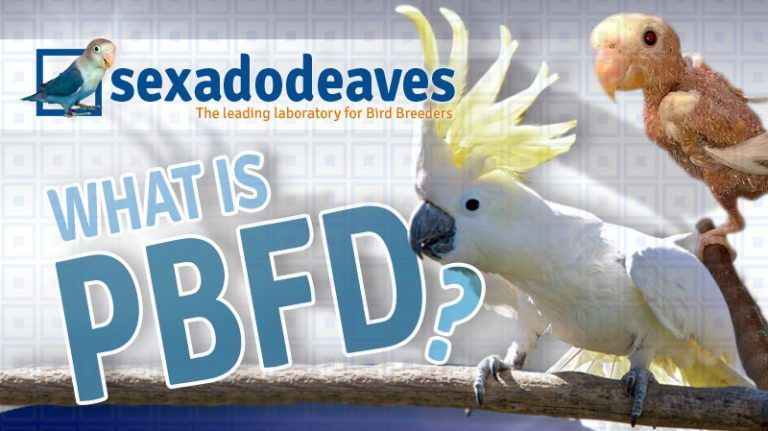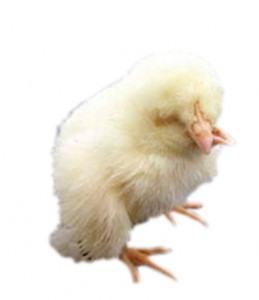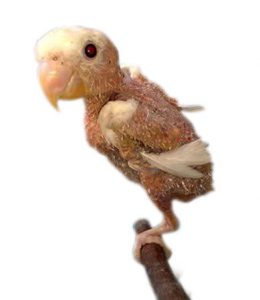All you need to know about PBFD
Avian circovirus (commonly known as PBFD, Psittacine beak and feather disease) is a disease that affects the family Psittacidae (parrots, macaws, budgerigars, etc.) from Europe, Asia and America. This viral disease attacks the cells in charge

Avian circovirus (commonly known as PBFD, Psittacine beak and feather disease) is a disease that affects the family Psittacidae (parrots, macaws, budgerigars, etc.) from Europe, Asia and America. This viral disease attacks the cells in charge of the growth of the follicles located in feathers, beak and claws. This mainly causes continuing malformation and necrosis. It is important to understand that this disease does not have a cure nowadays and in most cases brings death to the infected bird.
This disease has its origin in a virus which is commonly found in places with insufficient ventilation as it is mainly transmitted by the dust from the feathers.
Besides, PBFD is commonly found where birds from different places of origin coexist and lack of good veterinary checks. Other ways this disease can be transmitted are: directly from the father to the offspring, through the secretion of the cells lining the crop, fresh or dry feces and dry particles of the skin.
It is also worth mentioning that this disease is potentially found in domestic birds. This can be a threat to modern poultry farming and the market around it.
Once inside the organism, the virus adheres to tissues like thymus, the Bursa of Fabricius, the crop, feathers or the skin, among other places. It is worth pointing out that there are two possible forms of the disease, chronic and acute. The one your bird may have will depend on the age, species and variety of the virus.
The main symptoms developed by this disease would be:
- Depigmentation of the feathers, the natural color of the feather tends to get grayish.
- Molting problems, new feathers do not grow properly.
- Lack of dust in the feathers in the case of African Greys and Cockatoos.
- Abnormal development of feathers and beak, growing bigger than normal.
Other symptoms will depend on the species, the stage of the disease and age of the bird. The symptoms can be vomiting or embolism among others.
But even if a bird shows these symptoms we cannot be sure that the bird has PBFD. There are several ways to get to know if our bird suffers from PBFD. If we witness any of the symptoms we mentioned above, we will know that something is wrong. Apart from them, we have to look for other signs.
The infected bird would suffer from lethargy, loss of appetite, vomits and diarrhea. The lifespan of an infected bird is between 2 and 4 weeks. Nevertheless, if we want to confirm that our bird suffers from PBFD, the best option is to take a blood sample and send it to an avian laboratory. They will perform a PCR and send you the answer via e-mail in a short term.
Unfortunately, there is no specific treatment for this virus. Nevertheless, nowadays research is being conducted to develop a vaccine. For the moment, it protects the birds from getting infected, but it accelerates the progression of the disease in those birds already infected.
Some measures that could be taken to prevent the infection are the following:
- Buying birds in a reliable place where laboratory certificates are given along with the birds. Also, it would be good sign if the breeder shows us around the facilities.
- Avoiding mixing species that are more likely to get infected with those that are not.
- Buying food and accessories for the birds in places where pscitacidae are not sold or disinfecting thoroughly the goods.
If the infected bird is in contact with other birds, we would need to put in quarantine all those birds. Besides, used cages and aviaries need to be desinfected. Doing so, we will prevent them from getting infected.
PBFD is a progressive disease and, as we already mentioned, although there are birds that survive, the majority of birds die from it. Birds that survived to this disease only were affected up to some extent, for example they lost their feathers or showed some other minor effects. Nevertheless these birds will be a contamination source until they die. When the bird gets worse, your vet will recommend you putting it down.
PBFD is one of the most deadly diseases that our birds can suffer from, we have to be conscious that the health and wellbeing of our birds will depend on us. That is why we urge you to have into account the instructions stated in this article in order to prevent this disease from infecting your birds so they are safe and can live happily in your company.




Danielle November 1, 2020
Ahh, my cockatoo has it, but he still acts active and natural. I want to know ways I can help him recover like what food to give him or cleaning his cage. Please help